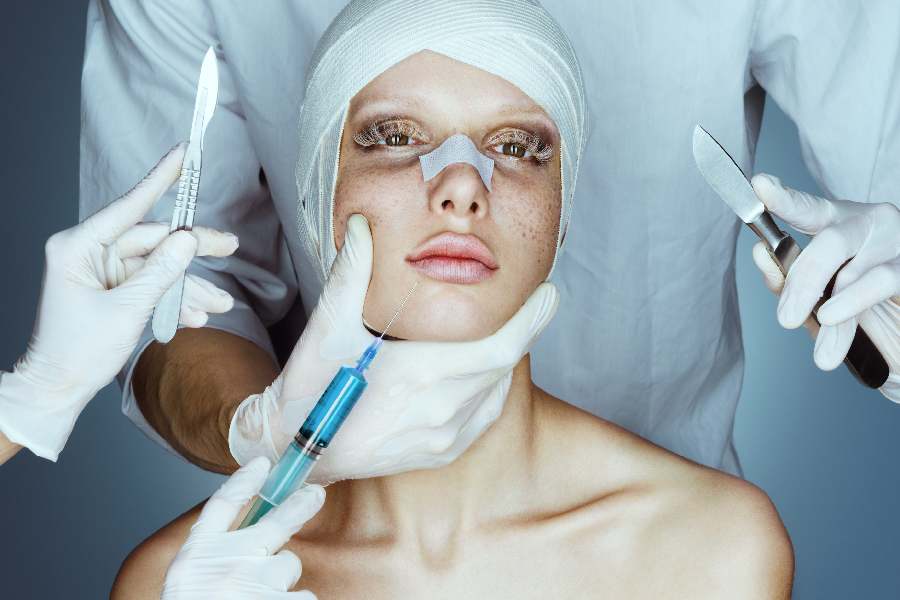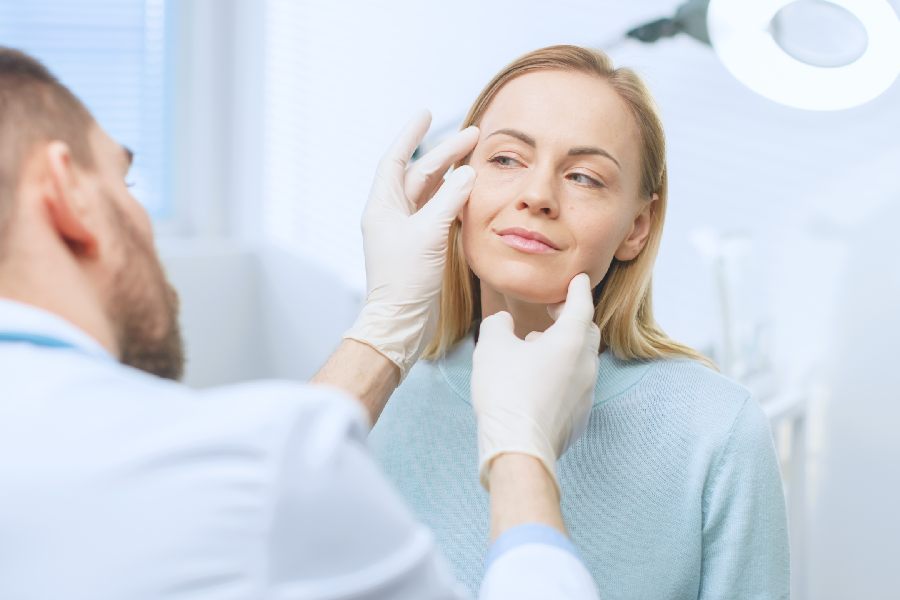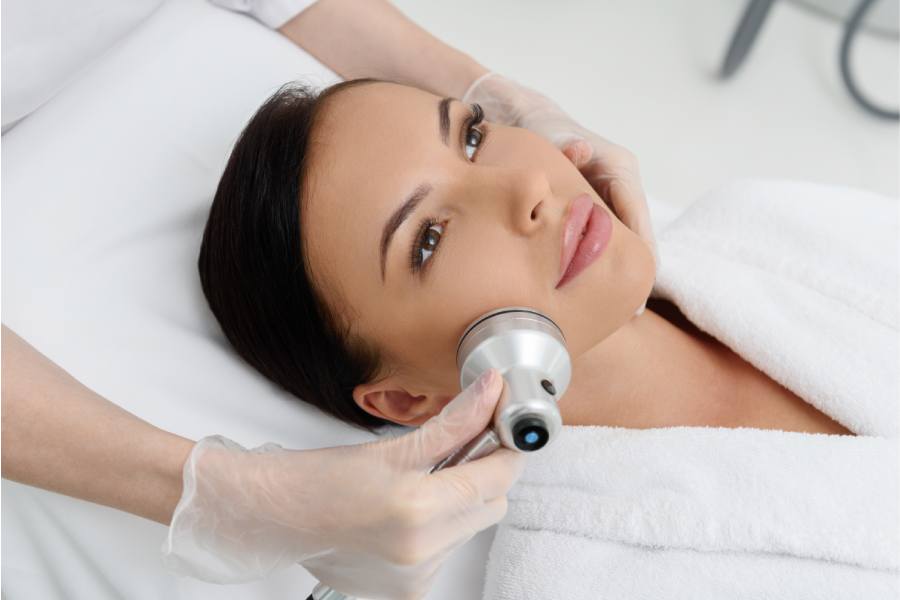Rhytidectomy is a procedure that many individuals undergo to restore a youthful appearance. While it can provide excellent results, some patients may experience side effects. That’s why in this post, we will discuss how to get rid of lumps after facelift.
These skin issues can affect the patient’s satisfaction with the surgery. They can also raise health concerns. Luckily, several methods may help address the lumps in the skin. Read on and discover which techniques can result in their elimination.
[ez-toc]
Understanding Common Causes of Lumps After a Facelift Surgery
To remove lumps after a facelift, it is necessary to understand why they can appear in the first place. After a facelift surgery, the body goes through a healing process.
This includes the formation of scar tissue. Lumps and uneven skin texture may occur due to the accumulation of scar tissue beneath the skin. A palpable mass may also appear due to swelling and inflammation around the stitch.
The lumpiness is common during the healing process and is temporary. It diminishes once the body recovers about two weeks after the surgery. In cases of more aggressive facelift procedures, they may last longer.
However, these skin issues can persist in some cases and even cause discomfort. For this reason, you need to know how to address them and improve your skin appearance.

Source: shutterstock.com/ Photo Contributor: RomarioIen
How to Differentiate Between Normal Swelling and Lumps After Surgery
After a facelift, it is common for patients to experience some swelling and lumps. But, the lumps and bumps on the skin generally fade over time.
Therefore, you have to distinguish between normal post-operative swelling and lumps requiring medical attention. Check these guidelines to help you differentiate between the two situations.
Time of appearance
Swelling is part of the healing process when it comes to a facelift. In general, it is visible in the first 48 to 72 hours, and then it starts subsiding. Yet, problematic lumps may appear after the swelling and persist for an extended period.
Lump location
The swelling after a facelift may affect the patient’s face and neck area. It usually impacts both sides of the face. Problematic lumps may appear on specific facial areas and may feel different.
Lump size
Swelling characterizes by puffiness of the face, making the skin feel firm and tight. Problematic lumps are smaller, localized, and have a distinctive shape. They can also feel tighter or softer than the surrounding areas of the face.
Pain
Since a facelift is a surgical procedure, it is common for patients to experience mild discomfort and tenderness. Still, these symptoms should diminish with time.
If you are dealing with persistent pain and sensitivity to touch, it may be a case of problematic lumps. They may change their appearance and become more painful.
Recommended Post-operative Care to Minimize Lumps
The surgeon guides patients throughout the process. They provide care instructions after the cosmetic procedure. Patients who follow them can avoid unnecessary pain, swelling, and complications.
Each surgeon may have their own specific guidelines. Still, some general tips may be effective. Here are some post-operative instructions you can adhere to minimize lumps:
- Clean your wounds. Keeping your incisions clean and dry is essential after the cosmetic procedure. To do so, wash the skin incisions with water and soap a few times daily. Use ointments recommended by the surgeon.
- Take prescribed pain medications. Following surgery, take the prescribed pain medications as the surgeon recommends.
- Use cold compresses and ice packs. To reduce swelling and inflammation, you may apply cold compresses or ice packs. You might use them within 24 to 48 hours after the procedure.
- Elevate your head. While you are resting or sleeping, make sure to keep your head elevated to reduce swelling. Maintain this resting position for the first weeks after the facelift.
- Avoid heat. Heat may increase blood flow and swelling. Therefore, avoid excessive exposure to heat. Refrain from steam baths and saunas for a couple of months and activities that may cause sweating for several weeks.
- Stay hydrated. Proper nutrition, as well as hydration, are essential for the healing process. Increase fluid intake and consume a well-balanced diet. Avoid excessive salt, as it can contribute to swelling.
- Avoid strenuous physical activities. Staying active is important for your health. However, strenuous exercises soon after the surgery may disrupt the healing process. As you are healing, you will be able to return to your normal activities. Get plenty of rest following the surgery.

Source: shutterstock.com/ Photo Contributor: Gorodenkoff
Non-Invasive Treatments That Can Help Reduce Lumps
After a facelift, the surgeon may propose treating post-operative lumps. Which treatment will be suitable depends on the patient’s situation and the nature of their lumps.
Here is what they may recommend regarding techniques for reducing lumps after facelift.
Massage therapy
Massage therapy may help to smooth out your lumps after the cosmetic procedure. Start by massaging the affected areas with a gentle motion. The massage may also improve blood circulation and break down scar tissue, helping the healing process.
That being said, you need to start massage therapy with utmost care and follow your surgeon’s instructions. Applying excessive pressure may worsen the lumps and affect the healing process. The same applies if you are massaging too soon.
Avoid massaging if the areas of your face are still bruised. The wounds should be closed before considering massage therapy after a facelift procedure. This type of therapy may ease pain, decrease swelling, and soften the skin around the scar areas.
Manual Lymphatic Drainage (MLD)
MLD is a specialized gentle and non-invasive massage technique that may activate the lymph nodes. It may stimulate the lymphatic system and unclog lymphatic vessels, draining the surgical tissues.
It aims to minimize swelling and promote lymphatic fluid drainage. Only trained therapists guided by the surgeon perform it. MLD sessions after the surgery may soften lumps and scars and reduce swelling and bruising.
Topical treatment
Certain topical treatments are also recommended for minimizing and managing facelift lumps. The surgeon may recommend silicone-based gels or creams, which may reduce the scars’ visibility.
These topical products may improve skin texture by creating a protective barrier over the lumps. In the same way as massage therapy, it is essential to approach this method with care.
Follow the application frequency and treatment duration as recommended by your surgeon.
Steroid injections
If you are wondering how to get rid of lumps after facelift, your surgeon may recommend steroid injections. These corticosteroid injections may reduce inflammation and scar tissue formation.
These injections may speed up the healing of persistent swelling after a facelift procedure. They involve injecting a small amount of corticosteroid medication into the lumps.
The medical providers perform in the office, and it is a quick procedure. Steroid injection is usually a well-tolerated procedure. Still, discussing its potential risks with your surgeon before proceeding with it is necessary.
Hyaluronic acid fillers may also improve the contour of any visible skin issues that appear as a result of the presence of lumps.
Ultrasound therapy
Ultrasound therapy is another option to consider for resolving lumps after facelift surgery. This therapy involves the use of high-frequency sound waves. This treatment uses targeted energy to stimulate collagen production.
Doing so may promote the remodeling of the scar tissue, and the heat generated by the devices mentioned above may soften and break down the lumps. The surgeon may suggest a series of treatments targeting specific areas on the face.

Source: shutterstock.com/ Photo: Olena Yakobchuk
Radiofrequency treatment
This type of treatment involves using radiofrequency energy. It aims to heat deeper layers of the skin and, as a result, stimulate collagen production. RF may help soften the affected areas. However, the patients may need several sessions for optimal results.
Laser therapy
Laser therapy may improve uneven skin texture. This type of therapy targets the deep layers of the skin. It may stimulate collagen production and promote smoother healing. This type of therapy may also reduce lump visibility.
When to Consult a Surgeon for Evaluation and Further Treatment
Following the surgery, it is important to consider your well-being. In case of fever, chills, severe pain, redness, or other uncomfortable symptoms, it is crucial to consult your surgeon as fast as possible.
Here are some signs indicating you should contact your surgeon:
- Worsened and increased swelling and bruising
- Bleeding from the incisions
- Development of new lumps
- Increased pain and discomfort
- Experiencing side effects from medications
- Persistent redness, excessive scarring, or signs of infection
- Yellowish and greenish incision drainage
- Changes in the skin texture and color
- Dissatisfaction with the results of the cosmetic procedure
Consulting your surgeon after surgery
Now that you are familiar with how to get rid of lumps after facelift, you need to know what to address during the consultation with your surgeon.
After a facelift, following the post-operative instructions provided by your surgeon is crucial. If you have any concerns about the appearance of lumps or the healing process, contact your surgeon for further treatment.
They are familiar with your case and can provide you with personalized advice. During your consultation, ensure to discuss your concerns about any type of discomfort that you may be experiencing.
The surgeon may also conduct a physical examination to determine the lumps’ severity and nature. Then, they can recommend the best course of action based on your circumstances after the examination.
It is important to attend follow-up appointments, so your surgeon can track your healing process.
